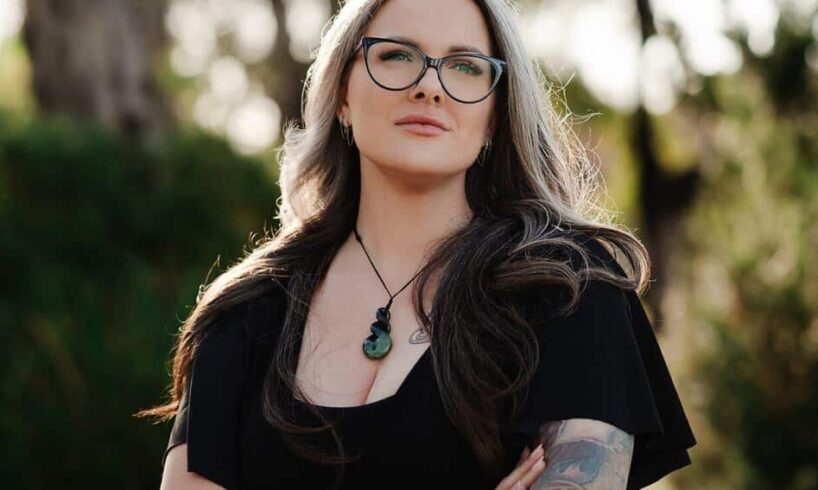
Nelli Stevenson has been living with chronic pain since she was a teenager — but it has taken her many years, and a serious medical emergency, to find the help she needed.Stevenson, 37, started experiencing chronic pelvic pain, along with a nerve pain called sciatica, when she was around 14 years old. These conditions later worsened after the birth of her child, and became chronic around three years ago.”I live with chronic persistent pain. I’ve had several medical professionals tell me I’ll likely be in pain for the rest of my life,” she told SBS News.
“There is only so much they can do for me surgically. So, I manage my pain on a day-to-day basis through a number of physical interventions, as well as medical interventions as well.”
Stevenson works for a community legal service with flexible arrangements, and says she is fortunate to have access to a specialist GP and team who support her physical therapy and pain management.”However, it took me about 20 years of pushing through the medical system, constantly advocating for myself and fighting to be taken seriously, to be able to find that group of people,” she said.This started in her late teens.”I was told, like most people with pelvic pain, that it’s just part of being a woman, it’s part of your period. I was gaslit for several years,” she said.This had serious consequences. At one point, Stevenson says she had normalised the chronic abdominal pain she was experiencing that she didn’t notice her appendix had ruptured.”I didn’t present to hospital until 12 days after it had happened,” she said. Stevenson ended up in ICU and needed two major surgeries to save her life. She says these caused significant scar tissue, which added to her chronic pain.
She said she has heard many stories of late diagnosis, misdiagnosis and gaslighting from the chronic pain community.
“They [medical professionals] aren’t taking seriously these people who are saying, ‘I cannot live like this anymore. I need more help.'”Chronic pain is taking longer to diagnose in 2025, according to a new report from peak consumer body Chronic Pain Australia .
The 11th edition of its National Pain Survey, released on Monday to kick off a week-long awareness campaign, has revealed what it calls a “devastating national crisis” marked by diagnosis delays and a severe mental health toll.
Waiting for a diagnosis
Chronic pain is a common and complex condition characterised by persistent pain experienced on most days of the week, according to the Australian Institute of Health and Welfare.Approximately one in five Australians, or 3.6 million, live with chronic pain. However, Chronic Pain Australia believes the figure is higher.”That figure came from a study that was done about 15 years ago,” Chronic Pain Australia chair Nicolette Ellis said.
“What we’re predicting chronic pain is sitting at in [terms of] prevalence is about four million Australians in this day and age, and [this is] projected to go up to five million in 2050.”
Of the almost 5,000 survey respondents, many had multiple conditions, including pain, joint pain and nerve pain, often experienced at the same time.
Over half (54 per cent) of respondents reported waiting more than two years for a diagnosis, and 44 per cent waited over three years. This has increased from 42 per cent waiting over three years in 2024, and 41 per cent in 2023.
Mental health impacts — and a ‘pervasive’ stigma
Ellis said delayed diagnoses can contribute to the “vicious cycle” of chronic pain, including mental ill health.”For a lot of people, it takes away their identity, increases their mental health issues … and that’s because of [what] pain can take away,” she said.”If you’re waiting for a diagnosis, typically you lose function. That might be reduced hours at work, or it might be leaving the workforce altogether.”
The report revealed 74 per cent of respondents had experienced mental health impacts, with 87 per cent experiencing sleep disturbances.
Among other impacts was 63 and 59 per cent of respondents who experienced strain on family relationships and friendships.Stigma around chronic pain is “pervasive”, according to the report, which found 74 per cent reported feeling ignored or dismissed. Ellis said this can come from health professionals along with friends, family, and community members. However, reported stigma from health professionals was higher than overall levels.
“Many people feel gaslit or stigmatised by health professionals — that this is all in their head and it’s not a true condition,” she said.
Calls for more complex care
Despite the complex nature of chronic pain, the report found access to appropriate multidisciplinary and specialist care is falling short.Only 18 per cent of respondents received a referral to multidisciplinary pain management, and 30 per cent of those referred never secured an appointment.Ellis said access to multidisciplinary care is limited and dependent on location.”If you’re in a metropolitan area, usually you can get into a tertiary or hospital-based pain clinic. But they have massive wait lists,” she said.
“Access to that kind of care is very limited.”
Chronic Pain Australia has been advocating for integrating multidisciplinary care programs into primary care settings.Ultimately, it wants to see chronic pain recognised as a condition in its own right — and made a national health priority.”Currently, we don’t recognise pain as a condition in its own right; we recognise it as a symptom. What that means is that not only is chronic pain invisible to society, it’s invisible in our health system data and in our policies,” Ellis said.Ellis said recognising chronic pain in its own right would increase awareness of the condition, to guide adequate funding and resources.SBS News has contacted the federal health department for comment. It’s understood the latest report will be presented to parliament later this week.For Stevenson, having access to early diagnosis and complex care can make an “extraordinary difference”.”It means that someone who may otherwise be bedridden for weeks and weeks on end can actually participate in society, can maintain a healthy work-life balance, and can go about their days as a person living as pain free as possible, which surely we all deserve.”
Source





